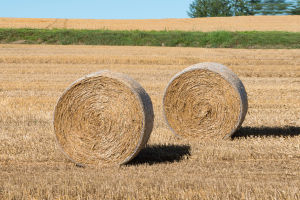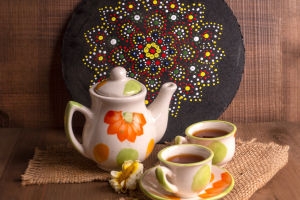
Creating a straw bale garden is a great way to grow plants in a cost-effective, eco-friendly, and space-saving manner.
Straw bale gardening uses bales of straw as a growing medium, offering numerous benefits such as improved drainage, heat retention, and minimal soil requirements.
If you're ready to try something new in your gardening journey, here’s how to make your own straw bale garden!
1. Choose the Right Straw Bales
Start by selecting high-quality straw bales. You’ll want bales that are not too compact, as they need to breathe to encourage plant growth. Wheat, oat, and barley straw work best. Avoid hay bales, as they can contain seeds that will cause problems in your garden.
2. Prepare the Bales
Place your straw bales in a sunny spot with good air circulation. Lay them with the cut side up, as this will help the bales absorb water better. Water the bales thoroughly to start the conditioning process.
3. Condition the Bales
To turn your straw bales into nutrient-rich planting mediums, you’ll need to condition them. Over 10-12 days, regularly water the bales and apply a nitrogen source like blood meal, alfalfa meal, or compost. This process helps decompose the straw, creating a fertile environment for plants to grow. You’ll notice the bales will heat up and then cool down, which indicates the conditioning is working.
4. Planting Your Straw Bale Garden
After conditioning, you can plant your seeds or transplants directly into the bales. Simply create small holes in the bale, fill with compost or planting mix, and place your plants in. Straw bale gardens work well with vegetables, herbs, and flowers. Be sure to select plants suited to the height and space of the bales.
5. Water and Maintain
One of the key benefits of straw bale gardening is its ability to retain moisture. Water the bales regularly, keeping the soil moist but not overly soaked. Fertilize the plants as needed, depending on the type of crops you are growing. Straw bale gardens require less weeding and are less prone to pests due to the raised nature of the bales.
6. Harvesting and Reusing the Bales
After your growing season, you can use the straw bales as mulch for your garden or compost them to enrich the soil for future plantings. You can also use the bales for another round of planting the next year, provided they are still in good condition.
Straw bale gardening is an innovative and sustainable method to grow healthy plants without the need for traditional soil beds. Whether you have limited space or want a unique gardening experience, straw bale gardening is a fantastic option to explore!
How To Plant A STRAW BALE GARDEN In 4 Easy Steps
Video by The Millennial Gardener


